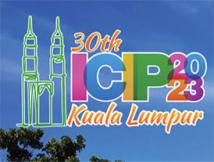
IEEE ICIP 2023 - The International Conference on Image Processing (ICIP), sponsored by the IEEE Signal Processing Society, is the premier forum for the presentation of technological advances and research results in the fields of theoretical, experimental, and applied image and video processing. ICIP has been held annually since 1994, brings together leading engineers and scientists in image and video processing from around the world. Visit website.
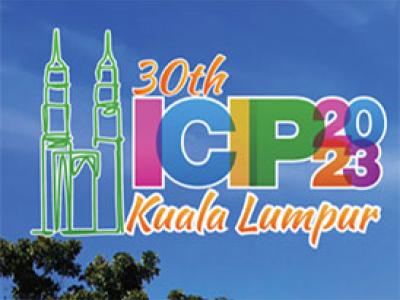
- Read more about LEARNED IMAGE COMPRESSION GUIDED ADAPTIVE QUANTIZATION FOR PERCEPTUAL QUALITY
- Log in to post comments
Neural network based image compression has made significant progress in recent years. The learned image codecs are commonly reported to outperform their conventional counterparts in perceptual quality. Despite the superior performance, the learned image codecs are much more complex to decode, which hinders their usage in practice. Without a significant advance in hardware capability, the conventional image codec will likely remain a primary component for large scale image services. It is therefore desirable to improve the quality of conventional image codecs.
- Categories:
 55 Views
55 Views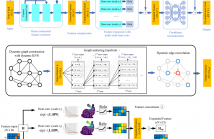
- Read more about Point Cloud Upsampling via Dynamic Graph Scattering Transform
- Log in to post comments
Point cloud upsampling is a challenging task to generate dense and uniform point clouds from sparse and irregular inputs. Existing deep learning based methods usually leverage graph convolution networks (GCNs) to learn features for expansion and reconstruction but suffer from the over-smoothing issue by discarding the high-frequency components. In this paper, we design a novel dynamic graph scattering transform (GST) to achieve multi-scale feature extraction for point cloud upsampling.
poster.pptx
- Categories:
 34 Views
34 Views- Read more about Functional Knowledge Transfer with Self-supervised Representation Learning
- Log in to post comments
This work investigates the unexplored usability of self-supervised representation learning in the direction of functional knowledge transfer. In this work, functional knowledge transfer is achieved by joint optimization of self-supervised learning pseudo task and supervised learning task, improving supervised learning task performance. Recent progress in self-supervised learning uses a large volume of data, which becomes a constraint for its applications on small-scale datasets.
- Categories:
 48 Views
48 Views
- Read more about A Joint Model-Driven Unfolding Network For Degraded Low-Quality Color-Depth Images Enhancement
- Log in to post comments
Inspired by multi-task learning, degraded low-quality color-depth images enhancement tasks are transformed as a joint color-depth optimization model by using maximum a posteriori estimation. This model is optimized alternatively in an iterative way to get the solutions of CGD-SR task and Low-Brightness Color Image Enhancement (LBC-IE) task. The whole iterative optimization procedure is expanded as a joint model-driven unfolding network.
- Categories:
 31 Views
31 Views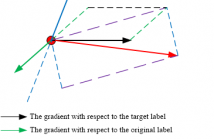
- Read more about Enhancing targeted transferability via suppressing high-confidence labels
- Log in to post comments
While extensive studies have pushed the limit of the transferability of untargeted attacks, transferable targeted attacks remain extremely challenging. This paper finds that the labels with high confidence in the source model are also likely to retain high confidence in the target model. This simple and intuitive observation inspires us to carefully deal with the high-confidence labels in generating targeted adversarial examples for better transferability.
- Categories:
 28 Views
28 Views
- Read more about Truncated Weighted Nuclear Norm Regularization and Sparsity for Image Denoising
- Log in to post comments
The attribute of signal sparsity is widely used to sparse representaion.
The existing nuclear norm minimization and weighted
nuclear norm minimization may achieve a suboptimal in
real application with the inaccurate approximation of rank
function. This paper presents a novel denoising method that
preserves fine structures in the image by imposing L1 norm
constraints on the wavelet transform coefficients and low
rank on high-frequency components of group similar patches.
An efficient proximal operator of Truncated Weighted Nuclear
- Categories:
 18 Views
18 Views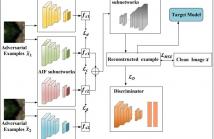
- Read more about Adversarial Defense via Perturbation-Disentanglement in Hyperspectral Image Classification
- Log in to post comments
Template.pdf
- Categories:
 38 Views
38 Views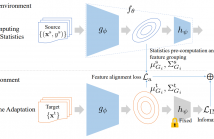
- Read more about COVARIANCE-AWARE FEATURE ALIGNMENT WITH PRE-COMPUTED SOURCE STATISTICS FOR TEST-TIME ADAPTATION TO MULTIPLE IMAGE CORRUPTIONS
- Log in to post comments
Real-world image recognition systems often face corrupted input images, which cause distribution shifts and degrade the performance of models. These systems often use a single prediction model in a central server and process images sent from various environments, such as cameras distributed in cities or cars. Such single models face images corrupted in heterogeneous ways in test time. Thus, they require to instantly adapt to the multiple corruptions during testing rather than being re-trained at a high cost.
- Categories:
 138 Views
138 Views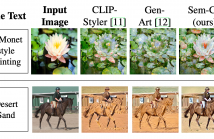
- Read more about SEM-CS: SEMANTIC CLIPSTYLER FOR TEXT-BASED IMAGE STYLE TRANSFER
- Log in to post comments
CLIPStyler demonstrated image style transfer with realistic textures using only a style text description (instead of requir- ing a reference style image). However, the ground semantics of objects in the style transfer output is lost due to style spill- over on salient and background objects (content mismatch) or over-stylization. To solve this, we propose Semantic CLIP- Styler (Sem-CS), that performs semantic style transfer.
- Categories:
 62 Views
62 Views
- Read more about SEGMENTATION AND CLASSIFICATION-BASED DIAGNOSIS OF TUMORS FROM BREAST ULTRASOUND IMAGES USING MULTIBRANCH UNET
- Log in to post comments
Breast ultrasound is useful for the diagnosis of breast tumors which can be benign or malignant. However, accurate segmentation of breast tumors and the classification of breast ultrasound into benign, malignant, or normal (no tumor) categories is challenging because of different reasons including poor contrast of the tumor region and absence of clear margins. We propose a Multibranch UNet architecture that uses multitask learning for the automated segmentation of breast tumors and classification of breast ultrasound images.
- Categories:
 20 Views
20 Views